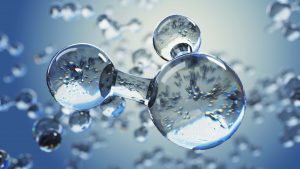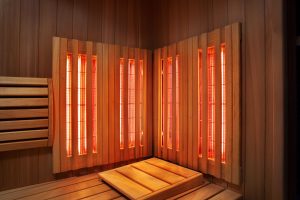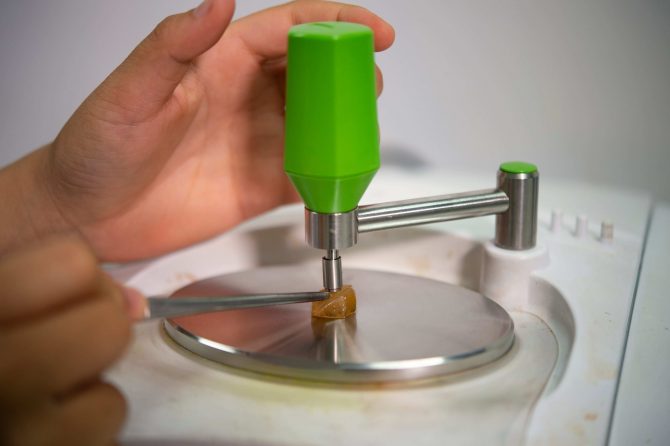Looking to implement a spectroscopy solution within your manufacturing process, but not sure what method is right for your scenario?
We’ve got you covered — spectroscopy as science is rather complicated as it is. Throw in the different types of spectroscopy, and you might be left scratching your head.
In our previous article, we covered UV-Vis spectroscopy — one of the most popular and effective spectroscopy methods. However, UV-Vis spectroscopy is not a one-size-fits-all solution. That’s why NIR spectroscopy or near-infrared spectroscopy exists.
In this article, we will explain what NIR spectroscopy is, how it works, how it differs from UV-vis spectroscopy, and cover its unique benefits in different applications.
Side Note: If you are not familiar with the principles of absorption spectroscopy and electromagnetic radiation, we recommend that you first explore our previous article on UV-Vis spectroscopy, which covers these topics extensively.
Optimize Your Manufacturing Processes with Spectroscopy. Get in Touch
What is NIR Spectroscopy?
NIR spectroscopy or near-infrared spectrophotometry (NIRS) is an absorption spectroscopy method that helps determine the chemical composition of a compound or solution by measuring how much near-infrared radiation the compound or solution absorbs.
As the name suggests, NIR spectroscopy operates in the near-infrared electromagnetic spectrum. Near-infrared radiation waves are slightly longer than those of visible light and cover the spectrum of 700nm to 2500nm.
In contrast to mid-wavelength and long-wavelength infrared radiation, the near-infrared spectrum is not thermal. In other words, NIR radiation is not responsible for the heat you feel from an open fire or the sun.
As a result, instead of being used in thermal imaging (think the Predator stalking Arnold Schwarzenegger through a Central American rainforest), NIR radiation is present in optical fiber, TV remotes and, of course, near-infrared spectroscopy.
How Does Near Infrared Spectroscopy Work?
The main principle behind the different methods of spectrophotometry, including NIR spectroscopy, is the Beer-Lambert Law. According to this law, the concentration of a certain chemical compound in a solution determines how much light, whether visible or infrared, this solution will absorb.
The higher the concentration, the more radiation of a specific wavelength will be absorbed. However, NIR spectroscopy differs from other spectroscopy methods in the mechanisms behind this absorption.
For instance, in UV-Vis spectroscopy, the absorption of visible light by a chemical compound is measured based on the absorption of electromagnetic radiation by the electrons that constitute the compound.
When an electron absorbs the radiation, it enters the so-called excited state where it is “charged” with more energy than in its normal (“ground”) state. However, electrons don’t stay excited for a long time and decay to their ground state shortly after, releasing the equivalent amount of energy that they had absorbed. This process is also known as the electronic transition.
And because the electrons of different chemical elements require different amounts of energy to enter the excited state, UV-Vis spectroscopy can determine their nature by measuring the amount of that energy.
NIRS works differently because of the unique interaction that near-infrared radiation has with matter. Rather than exciting the electrons within the atoms of a chemical element, near-infrared radiation affects entire molecules. More specifically, it affects the molecules’ vibrational motion — the bonds that make the atoms within a molecule stick together.
When exposed to near-infrared radiation, a molecule absorbs the electromagnetic photons and start the process known as the vibrational transition — stretching, shrinking, bending, rocking back and forth, and so on. Because of this mechanism, NIR spectroscopy is commonly referred to as vibrational absorption spectroscopy.
But how does this molecular vibration help determine the chemical composition of matter through NIR spectroscopy?
This has to do with how a molecule behaves during the state of vibrational transition. Depending on the chemical elements that constitute the molecule, it will have specific vibrational modes.
Let’s consider a molecule of water as an example. A molecule of water consists of two partially positively charged atoms of hydrogen connected to a partially negatively charged atom of oxygen. When exposed to specific frequencies infrared radiation, the water molecule is excited too ne of the following higher energy vibrational modes:
- Asymmetric stretch, during which one of the hydrogen bonds shrinks while the other extends
- Symmetric stretch, during which both hydrogen bonds shrink or stretch
- Scissoring bend, during which both hydrogen atoms rock back and forth towards each other as if they were impaled by a pair of scissors
Determining what vibrational mode a molecule enters when exposed to infrared radiation, as well as the frequency of radiation necessary to excite the molecule into a higher vibrational state, is the operating principle behind NIRS.

Benefits of NIR Testing in Manufacturing
While it may seem like a spectroscopy method with a very narrow focus, NIR spectroscopy has several benefits compared to both other types of chemical analysis and other types of spectroscopy.
These benefits include:
- Rapid testing process: NIR testing takes less time than other non-spectroscopic chemical analysis methods that require extensive preparation and manipulation.
- High accuracy and sensitivity: Compared to other spectroscopy methods and UV-Vis spectroscopy in particular, NIR spectroscopy can be accurate and sensitive Second, a NIR spectrophotometer features gratings that help precisely select specific wavelengths during the testing process. As a result, NIRS can accurately determine even the smallest amount of a chemical compound in the sample.
- High versatility: The fact that NIR spectroscopy depends on the presence of hydrogenated compounds in the sample might seem like a limitation at first. However, this is not the case, as hydrogen bonded compounds are present in most organic and inorganic materials. As a result, it can be useful for both quantitative and qualitative analysis in a wide range of scenarios.
Configure the Right NIR Spectrophotometer for Your Next Chemical Analysis. Get in Touch
NIR Spectroscopy Applications [Real-Life Examples]
Because of its non-destructive nature, high speed, and accuracy, NIR spectroscopy is commonly used in a variety of scientific and industrial applications.
Most of these applications are motivated by the NIRS’ outstanding ability to detect the presence of water or other organic chemicals in a sample. Here are just a few examples.
Petrochemical Analysis
Crude oil and its byproducts are nothing more than a collection of hydrocarbon and organic compounds arranged in specific quantities and proportions. This makes petrochemical analysis at different stages of oil refining a perfect application for NIR testing.
The most common application of near-infrared spectroscopy in petrochemical analysis is determining the octane number of refined gasoline in real-time, during production. The octane number of gasoline is defined as the proportion of 2,2,4-trimethylpentane (iso-octane) to heptane in a refined gasoline mixture.
Both these materials are alkanes based on carbon-hydrogen bonds (C—H), which are very receptive to near-infrared radiation within the 900nm–1700nm wavelength range. The same applies to other components of petroleum and petroleum-based fuels, such as the PIONA (Paraffins, Isoparaffins, Olefins, Napthenes, and Aromatics).
Compared to conventional in-engine testing, determining the octane number of refined gasoline using near-infrared spectrophotometry is faster, cheaper, and less invasive.
Beverage Production
The unique interaction between near-infrared radiation and carbon-hydrogen bonds makes near-infrared spectroscopy useful for determining the presence and quantity of two particular chemical compounds — sugar and ethanol.
As a result, NIR testing is commonly used for quality control during the production of beverages that incorporate sugar, ethanol, or both. The best example of the latter is beer. In beer brewing, the quality of the end product depends on maintaining the right proportions of alcohol, fermentable sugar, non-fermentable sugar, diacetyl, and alpha acids that are responsible for the beer’s bitterness.
All of these components are organic compounds that can be accurately measured at any point during the fermentation and brewing process using NIR testing.
Food Production
Considering how useful NIR testing can be in beverage production, it only makes sense that it is equally useful in the quality control of food products.
That’s because near-infrared spectroscopy is capable of identifying and measuring essential food components and nutrients, from the sugar that we mentioned to fats, proteins, carbohydrates, and more.
Near-infrared light is not blocked or interrupted by translucent materials, such as glass. This is not the case with UV-Vis spectroscopy or other types of infrared spectroscopy. As a result, NIR spectrophotometry can be used to evaluate the quality of food products without disturbing the final packaging.

Features of tec5USA NIR Spectroscopy Instrumentation
tec5USA offers high-performance, plug-and-play NIR spectrophotometry instrumentation for a variety of environments and scenarios.
The highlights and key features of our NIR testing equipment include:
- 960nm–2150 nm wavelength range and ± 1 nm wavelength accuracy
- Thermoelectrically cooled indium gallium arsenide (InGaAs) photodiode array detector featuring holographic gratings for high efficiency
- Multichannel operation capacity with up to thirty two measurement locations supported per device
- Long-life halogen lamp to serve as the light source
All tec5USA spectrophotometers are designed to be completely insensitive to even the harshest environmental conditions and provide accurate measurements regardless of changes in temperature, humidity, or pressure.
Wrapping Up on NIR Spectroscopy
Near-infrared spectroscopy takes advantage of how the molecular bonds of different chemical compounds interact with and absorb near-infrared radiation to accurately determine the nature and composition of a chemical.
NIR spectroscopy is particularly capable when it comes to identifying and/or measuring organic compounds that feature hydrogen bonds in their molecular structure. This makes NIRS especially useful as a quality control measure in petrochemical analysis, beverage production, and food manufacturing.
tec5USA NIRS instrumentation is designed to perform in each one of these applications and more, thanks to its robust construction industrial-grade reliability. Explore our near-infrared spectroscopy solutions and find the right tool for your chemical analysis needs.




